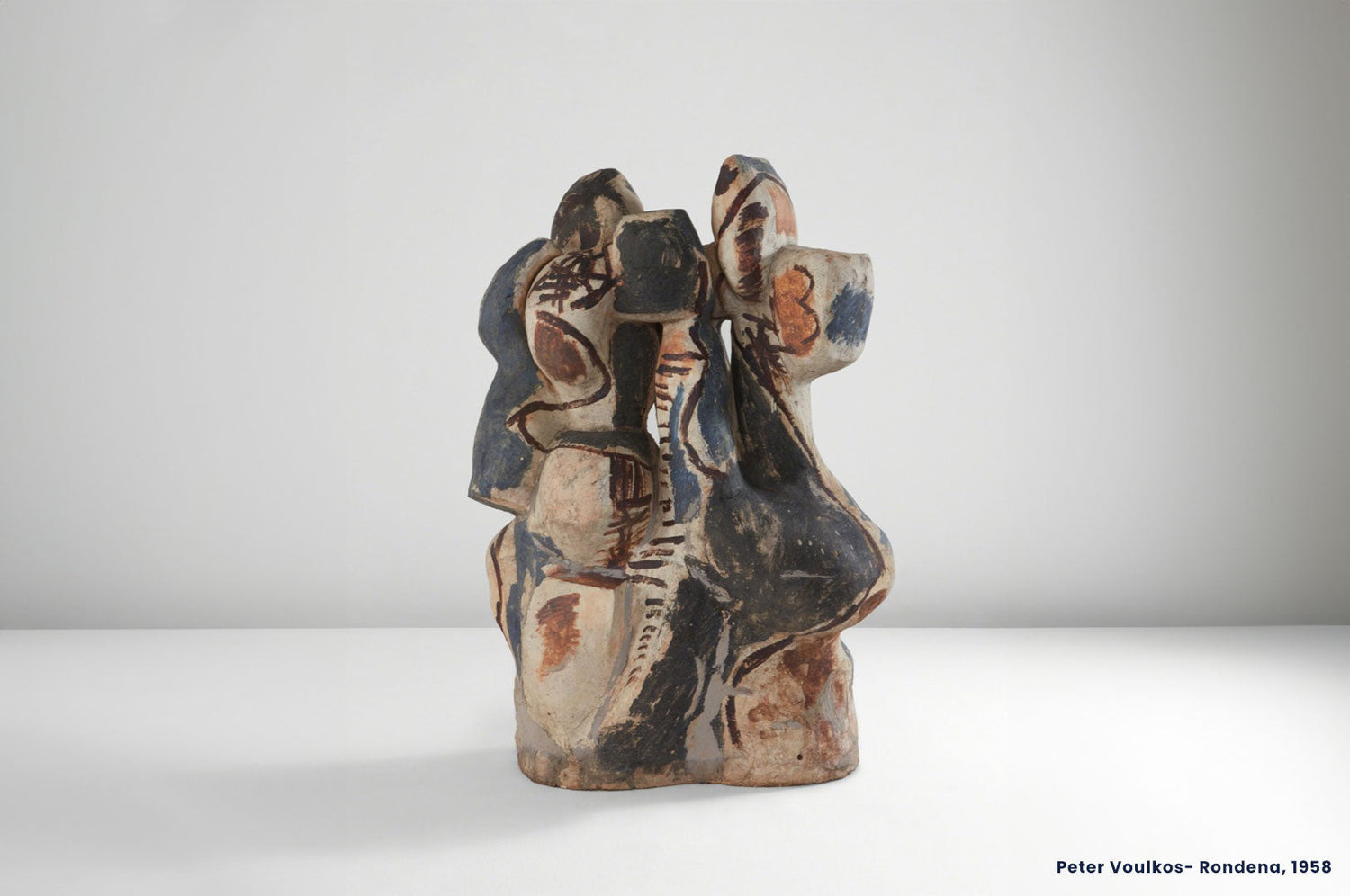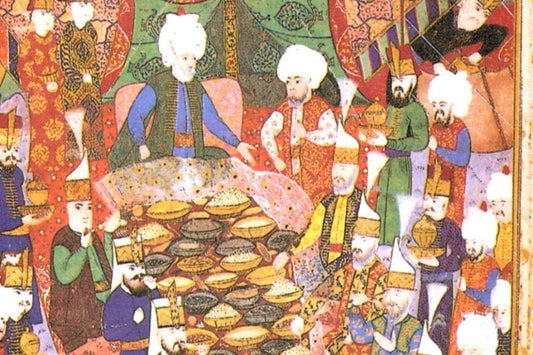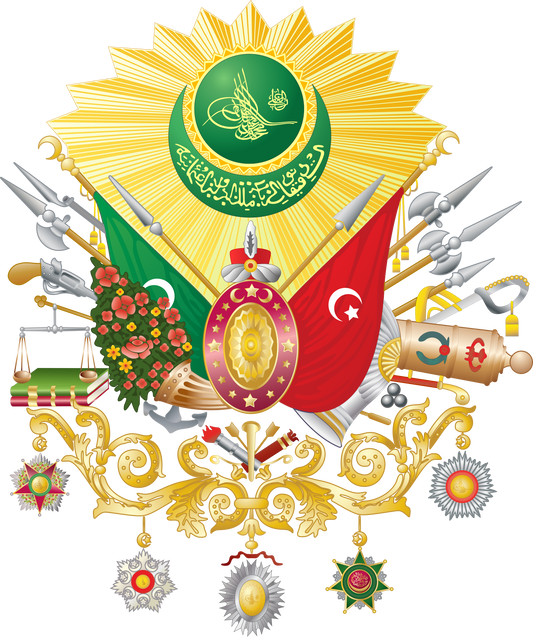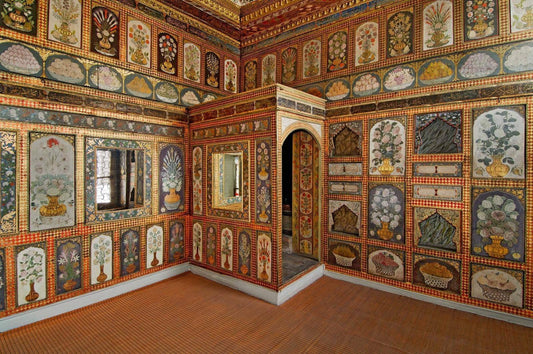Ceramic art offers a rich and diverse history, witnessing cultural, artistic, and technological developments over thousands of years. Since ancient times, this ancient art form, reflecting the aesthetics of societies and the spirit of their times, has undergone significant evolution in terms of form, color, and functionality. The 20th century, in particular, was a period of significant transformation, pushing the boundaries of ceramic art with new techniques and aesthetic approaches. During this era, "contemporary Turkish ceramic art" was shaped by international interactions and enriched by innovative movements and artists from around the world.
The fine craftsmanship of Japanese ceramicists and the liberal approaches of the American ceramic movement played key roles in the striking evolution of Turkish ceramic art. Exhibitions and workshops held in Turkey in the 1980s offered concrete examples of this intercultural dialogue and pioneered the acceptance of ceramic art as a powerful medium of expression.
This article explores how contemporary Turkish ceramic art has been shaped by international centers and interactions, exploring the place and significance of this unique art form on the global art scene. Throughout this journey, we will discover that ceramic art is not only a matter of craftsmanship and technical mastery, but also a universal language imbued with profound cultural meaning.
A Fine Touch of the Far East: Japanese Influence on Turkish Ceramic Art
The Far Eastern influence on Turkish ceramic art in the 20th century manifested itself as a rich cultural synthesis observable in the artists' works. Turkish ceramic artists closely followed developments in Japanese ceramic art and interacted with Japanese artists to adopt innovative techniques and artistic approaches. The reputation of Japanese ceramic art was strengthened by the harmonic juxtaposition of traditional and avant-garde styles. Turkish artists, in order to follow these innovative trends and engage more deeply with Japanese ceramic art, acquired knowledge through various publications and exhibitions. As a concrete example of this interaction, we can cite the highly acclaimed exhibition organized by Takuo Kato from June 24 to July 21, 1986. Furthermore, the Turkey-Korea Ceramics Workshop held in Alaçatı from July 26 to August 6, 2006, strengthened the artistic bridges between the two cultures.
However, in the late 20th century, the integration of Far Eastern techniques and approaches into Turkish ceramic art became more pronounced through popular techniques originating in the United States rather than directly from the Far East. This demonstrates that the United States played a significant role in transferring innovative movements and techniques in ceramic art to Türkiye.
The American Renaissance: Freedom and Innovation in Ceramics
The aftermath of World War II witnessed innovative transformations in artistic expression worldwide. During this period, Japanese ceramic artists aimed to reflect the modernist artistic approach, fashion, and ideas of the time in their works. As a result of this effort, abstract ceramic sculptures began to be created. While Japanese artists consciously distanced themselves from the formalism and disproportionality of traditional ceramics, American artists also sought to transcend European perfectionist approaches. During this period, Pablo Picasso's innovative approach to ceramic art influenced both sides, and the concept of "ceramic sculpture" was redefined through this new perspective.
This redefinition, along with the Arts and Crafts Movement spearheaded by William Morris and the Art Nouveau movement it sparked, brought a new dynamism to American ceramic art in the 20th century. Between 1940 and 1970, the United States exerted a global cultural and political influence, spearheading radical changes in art. During this period, artists fleeing Europe found a free artistic environment in America, the land of the free. Among the prominent artists of this period were Peter Voulkos, Paul Soldner, and Ken Price.
The Otis Movement was a crucial component of this transformation. It emerged as a movement that valued ceramics as a medium of artistic expression, transcending the boundaries of craftsmanship to establish itself among the fine arts. Peter Voulkos, a pioneer of this movement, brought a new dimension to the concept of "ceramic sculpture" with his abstract expressionist works. Voulkos's works transcended the traditional boundaries of studio pottery, highlighting ceramics as a powerful form of artistic expression. Thanks to the Otis Movement, American ceramic art gained momentum, pushing boundaries, proving that ceramic art was not solely based on technical skill but also encompassed a profound artistic vision and freedom of expression.
Abstract Expressionism and Functionality in Ceramics
Under the influence of the abstract expressionist movement, particularly in American ceramic art, the concept of "function in ceramics" became increasingly secondary. With the innovations brought by this movement, ceramic vessels began to transcend their traditional functions and acquire artistic value, much like sculpture. With this transformation, ceramic art gained the freedom to be sculptural and was accepted in the art world as a medium that conveyed its content.
Turkish Artists' Experiences in America
Among the artists who traveled from Türkiye to the United States in the 20th century were Hakkı İzzet, Beril Anılanmert, Jale Yılmabaşar, and Sevim Çizer. These artists experienced the American art scene. America's liberal and innovative art scene broadened the perspectives of Turkish artists. Interviews revealed the influence of American ceramic art on the new generation of Turkish artists. The artists stated that, rather than being directly influenced by Far Eastern techniques, these techniques were transmitted to Türkiye via America and Europe. In the late 1990s and especially in the 2000s, Turkish ceramic artists began to adopt Far Eastern techniques and gained a closer understanding of Far Eastern ceramics by participating in symposiums and workshops held in these regions.
Turkish Ceramic Art on the World Stage: The Role of International Interactions
The relationship between Turkish ceramic art and the Far East exhibits a different dynamic today compared to the era of imported porcelain via the Silk Road. Far Eastern techniques, materials, and artists first became known and popular in regions like Europe and America before reaching Türkiye through Western sources. However, Zerrin Ersoy and Nurdan Yılmaz Arslan's use of Far Eastern techniques such as raku, Vedat Ar's celadon-like sculptures, İlgi Adalan's works reflecting the approaches of modern ceramic artists in Japan and Korea, Tülin Ayta's Far Eastern experiences, and Sakine Çil and Reyhan Gürses' interest in Far Eastern ceramics are concrete examples of the Far Eastern influence on Turkish ceramic art. These interactions demonstrate how Turkish ceramic art has been shaped by a global perspective and how it has gained a place in the international art scene.
The Power of Intercultural Dialogue in Contemporary Turkish Ceramic Art
The international interactions of contemporary Turkish ceramic art reveal the broad scope of this art form's cultural and aesthetic dimensions. Throughout its history, Turkish ceramic art has reshaped itself with inspiration from diverse civilizations, and particularly in the 20th century, it has witnessed a unique evolution through interaction with global artistic movements and technical innovations. From the subtle touches of the Far East to the liberal spirit of American ceramic art, numerous cultural interactions have nourished the development and evolution of Turkish ceramic art within an international dialogue. This article has examined in depth the role contemporary Turkish ceramic art plays on the international stage, how cultural interactions shape this art form, and how Turkish ceramic artists contribute to the global art scene. Thus, it has emphasized that ceramic art is not merely a craft but also a dynamic art form, imbued with deep cultural meaning and constantly evolving. This journey has demonstrated how ceramic art, as a universal language, builds bridges between diverse cultures and pushes the boundaries of art, creating new forms of expression.




